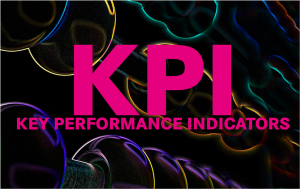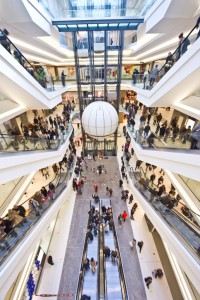BY STEFFEN HOFMANN
There is a lot going on! You don’t need to be an expert to predict that, in terms of transaction volumes, Q4 2015 can easily become one of the busiest quarters in the history of the European shopping center industry. Brokers, appraisers, legal and tax advisors, technical consultants, and commercial due diligence teams are currently fully stretched supporting all kinds of institutional investors to meet their ambitious year-end targets.
It is not only acquisition departments that will be busy, however. The fourth quarter is usually also a demanding period wherein asset managers of already established portfolios present their updated business plans for 2016 and beyond to their investors. Consequently, in combination with the on-going investment (or disposal) programs of their companies, asset management teams will indeed have enough on their plate this season.
How does forecasting work?
Whenever asset managers of financial institutions try to forecast the future performance of their real estate holdings, their dashboard will typically display a wide spectrum of well-known financial metrics, such as those shown below:
Typical financial metrics of retail real estate investors
- Gross Initial Yield
- Net Initial Yield
- Gross Rental Income
- Net Operating Income
- Market Rental Growth
- Inflation Outlook
- Weighted Average Unexpired Lease Term
- Credit Ratings / Tenant Covenant Strength
- Lease Renewal Probability
- Exit Cap Rate
- Market Value
- Loan-to-Value Ratio
- Cost of Debt
- Cash-on-Cash Return
- Distribution Yield
- Internal Rate of Return (unleveraged/leveraged; pre-tax/post-tax)
This rather universal set of numbers will usually be computed by skilled analysts for each and every shopping center transaction. Incidentally, you will find these terms applied across other real estate asset classes as well. For the bulk of Anglo-Saxon investment managers or international REITS, the Internal Rate of Return (IRR) should generally be the most important forecast figure, whereas many continental European insurance companies, pension funds, and occupational pension funds who need to distribute a steady amount of interest every year to their capital sources might have their eye a little more on the annual Distribution Yield. Needless to say, the complexity of a dynamic investment universe necessitates simplification in this respect.
The IRR metric is commonly used to support forecasting processes and assists investors in evaluating both their established and their potential real estate allocations. Mathematically IRRs are the discount rate that will bring a series of cash flows to a Net Present Value of zero (or to the current value of cash invested). They reflect the time value of money by way of using discounted cash flow analysis. Investors should think of IRRs as the projected rate of growth their real estate investment can potentially generate. It’s a simple tool to compare alternative investment opportunities. Due to these qualities, the informative content of Net Initial Yields on the day of the transfer of ownership, for example, does not come anywhere near the weight of an IRR outlook.
All that notwithstanding, the problem with IRRs, as with most of the above-listed performance indicators, is that, strictly speaking, we’re talking about output data based on many underlying input variables and assumptions which ultimately must be underpinned through the quality of the acquired asset itself. So the important question arises of how to evaluate the true quality of a shopping center when the task is to deliver future performance for an investment case not only on paper? Or in other words, how can I best measure performance for a shopping center so that my cash flow projections will be built on deliverable business plans?
Identifying Key Performance Indicators

As shopping centers are complex and management intensive investment products, they undeniably require unique sector specialist knowledge. Clearly, there are enormous cultural differences throughout Europe, which have to be taken into account in every single shopping center project. The vital fundamentals of successfully positioned retail destinations are strikingly similar across the board, however. Otherwise the likes of ECE, Hammerson, Klépierre, Multi, Sonae Sierra, Unibail-Rodamco or Westfield, for example, could hardly role out their successful operator models outside of their original home markets. The same holds true for some of the path-breaking cross-border investors such as Allianz Real Estate, Blackstone, CBRE Global Investment Partners, Commerz Real, CPPIB, Union Investment, and TH Real Estate, to name but a few. What all these different players seem to have in common is that their specialist teams understand the mechanics of successful shopping center investment.
Studying their success stories, it turns out that apart from robust business models, innovative and holistic conceptual thinking and resolute action in the field of retail asset management are key ingredients to their achievements. As Robert Kaplan declared in his masterpiece Balanced Scorecard (1996), you can’t manage what you don’t measure! Thus, active asset managers will always put sophisticated measuring instruments in place for them constantly to monitor the performance of their shopping center investment during the hold-period of an asset.
What do typical performance indicators in the European shopping industry look like?
There are certainly some classic, tenancy-related indicators that are worth being picked up in analysis, e.g.:
- Occupancy Level / Void Rates / Void Periods
- Fixed Rental Income / Base Rent / Minimum Guaranteed Rent
- Turnover Rent
- Commercial Income / Specialty Leasing
- Rental Arrears / Bad Debt
It was a material fallacy to assume that collecting and updating these statistics on a monthly or quarterly basis would be a match-winning exercise in the dynamic and hugely competitive retail environment that we live in these days, however. Landlords of retail real estate nowadays require access to live scheme data in order to be able to address key operational issues instantaneously and to safeguard alignment of the asset operation with the overall investment strategy. Active asset managers therefore examine issues in more detail. While they build up a good foundation by way of adopting the above breakdown as part of their standard routines already, some of the most important indicators are still missing:
- Footfall

For a shopping center investment to be successful in the long-run, retailers have to be able to run a profitable store operation on site. No doubt, in times of intense competition with e-commerce and m-commerce, we can certainly observe the much-cited showrooming phenomenon in the occupier market. This phenomenon predominantly counts in mega cities, luxury shopping destinations, and places with a special societal or cultural relevance, where the sheer store presence alone contributes positively to brand equity independently of the P&L of the local store operation.
For the majority of bread and butter centers, however, footfall means a lot because it offers the retailers an opportunity to convert strolling center visitors into purchasing store customers. And we all know that the conversion rate during a store visit is still much higher than the conversion rate during a website visit. That’s why experienced landlords put frequency counters in their malls. They have understood that lack of or decline in frequency can trigger a dangerous downward spiral of lower sales, shrinking profits, decreasing affordability, reduced willingness to pay high rents, downturn in space demand, higher vacancy rates, vanishing commitments to sign long leases, perceived cash flow risks for long-term investors and financing partners – which at the end of the day ultimately results in a lower asset value from an institutional investor’s point of view.
- Total Sales Volume (p.a.)
The evolution of frequency numbers over time should always be analyzed in conjunction with reported sales figures. Therefore, the availability of monthly tenant-by-tenant sales data is another key component in order to capture whether a retail asset is effectively a vibrant shopping destination or not. Monitoring tenant sales closely has become crucial for landlords to anticipate asset specific challenges and approach market trends early. Surprisingly, in too many projects, landlords still neglect to explore this essential performance data in sufficient depth!
Admittedly, in markets where tenants dominate the game it can occasionally be difficult to agree on an obligation with the retailers to declare their sales. In some legislations, tenants only report their turnover numbers on a quarterly or annual basis. That’s less than perfect. Whenever it is not explicitly agreed from the outset in the standard lease agreements with the tenants, investors might only get this information from a limited number of tenants on a voluntary basis or as a verbal indication from the local store managers. It stands to reason that following Kaplan’s logic, this circumstance will make asset management more difficult. Extreme examples are the Netherlands, where there is not much reporting of sales volumes from tenants to landlords, unlike in Portugal, where retailers in premium shopping centers submit their sales data to the owner by default— astonishingly in many cases even on a daily (but at least weekly) basis.
- Space Productivity

Since most retailers in continental Europe are used to paying a monthly rent, the prevailing way to measure the productivity of let retail space in a shopping center is to calculate the arithmetic ratio of sales per sq m of sales area per month and subsequently build up a rolling 12-month comparison. Watch out though: across European shopping centers, space productivities vary immensely depending on various factors such as the total scale of the asset, size of stores, assortment, competition, etc. As a rule of thumb, however, following an initial stabilization period of 3 to 5 years after the opening, medium-sized bread-and-butter shopping centers (i.e. 40,000 sq m+ schemes) should ideally come along with an annual space productivity of at least €3,000/sq m. Some of the better performing German shopping centers, for example, produce between €4,500/sq m and €6,500/sq m (p.a.)—in only a very few exceptional cases it might be more. The best schemes in metropolitan regions of Italy, France, and the UK exceed these levels. That’s why they can bear higher rent levels! One of the highest space productivities on the continent is observed in Switzerland, where the Glatt shopping center in Zurich is said to produce a phenomenal €12,500/sq m (p.a.), whereas, for comparison, Europark in Salzburg/Austria publishes impressive productivities of more than €9,000/sq m (p.a.). That’s not bad!
- Occupancy Cost Ratio (= Effort Rate)
The most relevant KPI in the shopping center industry is probably the so-called Effort Rate, which is alternatively termed Occupancy Cost Ratio (OCR). This measure is commonly reported in regular financial publications of some major shopping center REITS (e.g. Klépierre, Simon, Unibail-Rodamco, Westfield). From a tenant’s perspective OCRs capture the true costs of the rental agreement between a retailer and a landlord. Thus OCRs exceed the pure Rent-to-Sales ratios in quantity and quality of information since they also acknowledge ancillary costs such as service charges or the retailers’ participation in center management costs. From a mathematical point of view OCRs should be calculated as follows:
(Fixed rent + turnover rent + service charges [incl. management costs] + marketing contribution)
____________________________________________
retailers’ sales
Sustainable OCRs for shopping centers vary from country to country and also depend on the total scale and dominance of the individual scheme. As a rough estimate, it can be said that OCRs between 13.0% and 15.0% stand in many cases for a healthy relationship between costs and benefits of a lease. The lower the OCR the higher the rental growth potential that sophisticated asset managers will factor in when underwriting their business cases. In regionally dominant shopping centers or knock-out schemes, where the absolute volume of generated tenant sales will be outstandingly high and in turn fixed costs of the store operation will be covered quicker, OCRs can be slightly higher than in medium-sized centers, of course. Again, at the end of the day it all comes down to the P&L of the individual store, as rental values can only be grown as long as retailers run their physical retail space at a profitable level.
Unique mega malls with extraordinarily high frequencies and sales such as CentrO Oberhausen, Shopping City Süd/Vienna, Westfield London, Westfield Stratford, Bullring Birmingham, and Quatre Temps/Paris always benefit from huge tenant demand and should be able to show higher OCRs, but, in the long run, these should ideally not be much higher than 15% to max. 17%. It goes without saying that OCRs for individual leases might differ significantly from total scheme averages. Hypermarkets, for example, will not be willing to carry an OCR of more than 3.5% to 5.0% in many places, while furniture stores can survive with OCR levels of 15% to 20%.
How much can I rely on my performance data?
Clearly, measuring shopping center performance goes far beyond the steady monitoring of the integrity of established contractual relationships between a landlord and his tenants. Beyond understanding the performance data outlined above, investors need to comprehend what customers find attractive about a retail asset—and what they don’t like at all! Asset managers ought to identify smart ways to come up with the valid answers to this question.
In this context, understanding customer behavior is absolutely key to formulating short- to medium-term strategies and initiatives to deliver the right retail concept for the individual location. Regular customer satisfaction surveys will add valuable findings to the analysis. New technologies grant access to even more distinct feedback and thereby reveal insights in greater depth than ever before (e.g. social media feedback, app downloads, beacon installations, RFID technology).
All that notwithstanding, gaining access to the key performance indicators listed above is an asset in itself because the information allows investors to draw conclusions about the sustainability of rental values and indicates potential for intrinsic value growth. That’s a good piece already of what investment performance forecasts are about!






